Reducing transportation problems and delays using Artificial Intelligence
By Nima Maleki
April 23, 2020 • 8 min read

We at Quicargo are connecting thousands of companies with transport needs to a transport company each quarter. We are handling thousands of transport requests each month, carrying goods worth hundreds of thousands of Euros.
As part of our vision, we would like to offer a service that is as flawless as possible. However, supply chains are delicate and complex systems. A problem in one link can cause a ripple effect, and it could eventually hit the consumer.
Transporation incidents, problems and delays
To understand this better, consider this simple example, which could be generalized to almost any modern product:
You want to buy a birthday cake from your favorite supermarket chain. The cake comes in a plastic package. The supermarket chain buys the plastic package from a plastic wholesaler, that is supplied by a plastic producer.
If there is a problem in the transport between the plastic producer and wholesaler, as a delay of one day, it could affect the production of the birthday cake! You may think that the supermarket has a huge stockpile of plastic packages for rainy day, but it takes a lot of space and effort to do so for every product. So oftentimes stockpiles are reduced to a bare minimum.
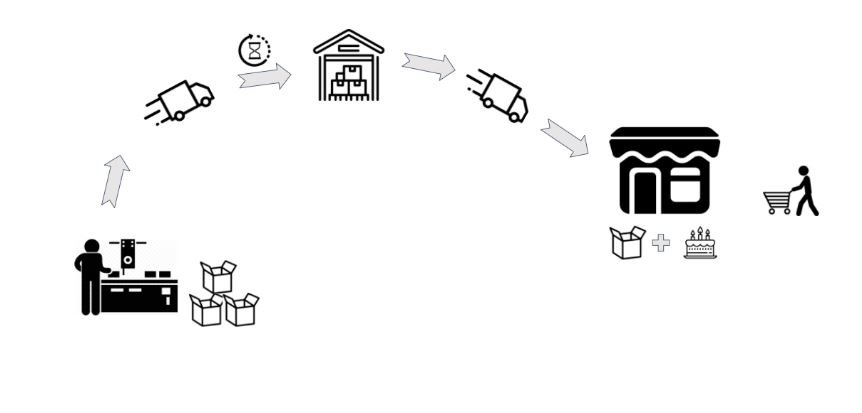
In addition, when something goes wrong in a transport, additional time has to be spent to fix the problem. There are inevitable costs that have to be absorbed by shippers, carriers, Quicargo, or all.
How can we prevent transportation problems?
Transport incidents are costly, both in terms of time, and their effect on the rest of the supply chain. Therefore we strive to prevent these problems from happening in the first place. However, the question is, how do we know if the transport is going to be problematic before it really takes place?
If we only had a very experienced planner who could oversee each and every transport and predict for us which ones are going to be problematic, we could pay more attention to those transport and prevent the time and money consuming incidents.
Imagine a transport planner that has observed hundreds of thousands of transports, and has the processing speed and memory of a super-computer. When the imaginary super-planner observes a new transport order, they can immediately notice if something is suspicious about it. If the order has a tight pickup time window and is planned to be picked up in a less known area, the super-planner will raise a red flag: “This is the recipe for disaster!”
In reality, we don’t have such a super-planner who recognizes the looks and characteristics of problematic transports beforehand. But we can teach a computer to think like the imaginary super-planner. This is what we call machine learning.
Machine learning and AI can help with solving problems in transportation
We at Quicargo, have developed and implemented a machine learning model that predicts if the transport is going to contain an incident or a problem, like a wrong address, long waiting times, delays, or missing pallets. Here is an overview of the steps we took to achieve this:
Step 1: Statistical analysis of operational problems in transportation and logistics
We studied our past transports meticulously. What could be the characteristics of problematic orders? Here is one example of such analysis:
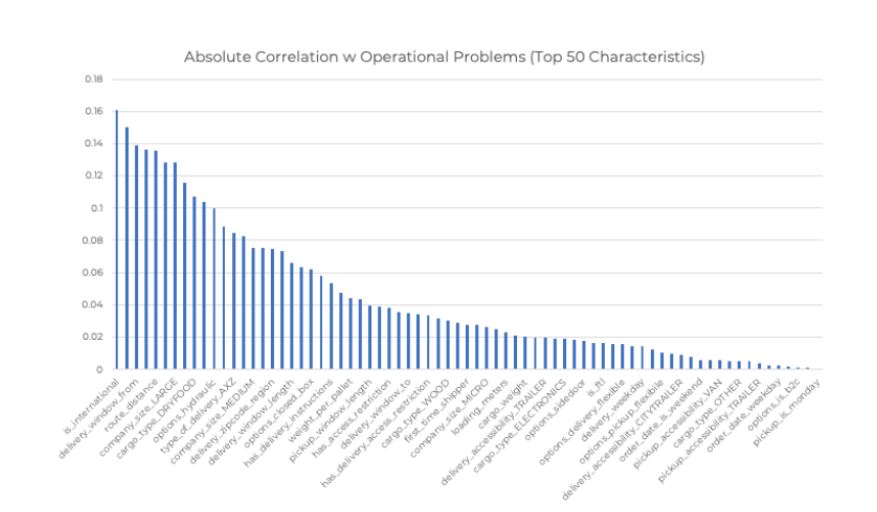
We can see which characteristics of an order are more correlated with operational problems and incidents.
Step 2: How to learn from problematic shipments in the past?
Let the machine learning algorithm learn the characteristics of the past problematic transports. We show both problematic and non-problematic past orders, so that the algorithm can find the decision rules that distinguish the two.
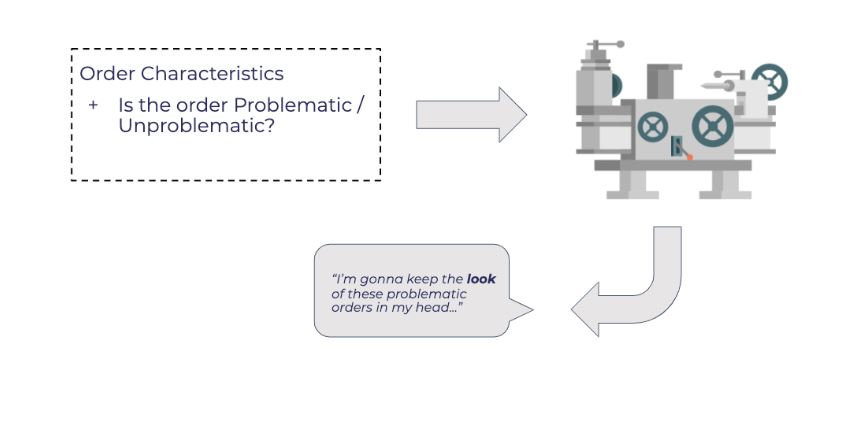
Step 3: How AI can be used to predict transport issues
When a new transport order is introduced to the system, we show it to the previously trained model. The model will assign a “risk” of having incidents to the new transport order.
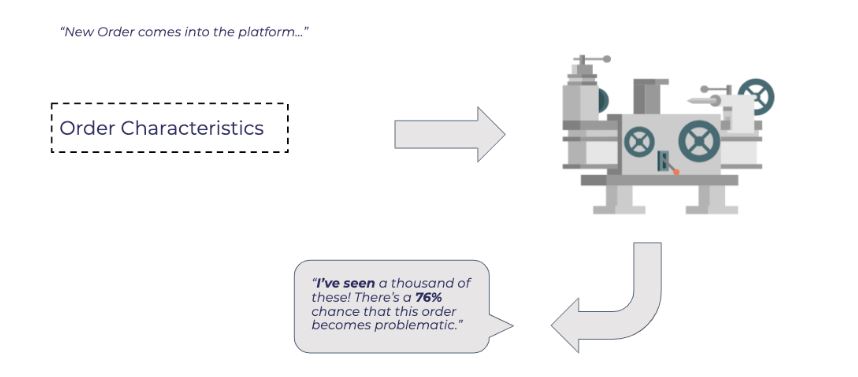
Step 4: Act and prevent shipment disruptions
When a transport order is predicted to be “risky”, we create tasks for our operation team, so that they can review the risky order with more care. We also create separate tasks on the day of pickup and delivery to ensure that everything is in order.
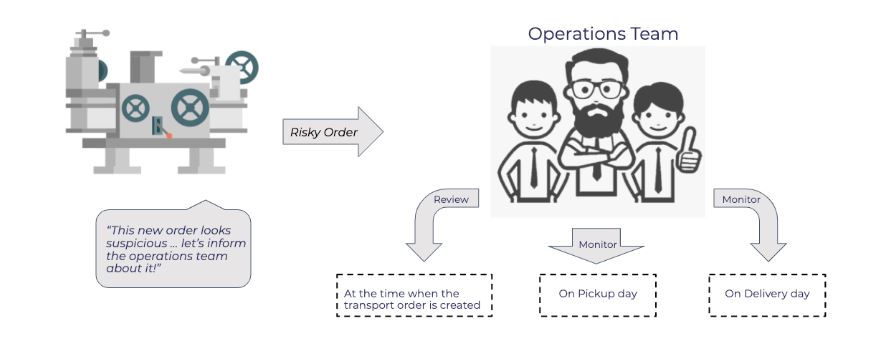
The results of using artifical intelligence and AI in the freight industry
The result is a reduction in operational incidents and problems via smart prediction and prevention.
Using this machine learning model we can predict and label more than 63% of all problematic transports as risky, the moment that they are created, way before the ignition switch key is inserted into the truck and before the transport is even planned!
By being proactive and taking preventive actions on these 63%, we are able to reduce operational problems and incidents by at least 20%!
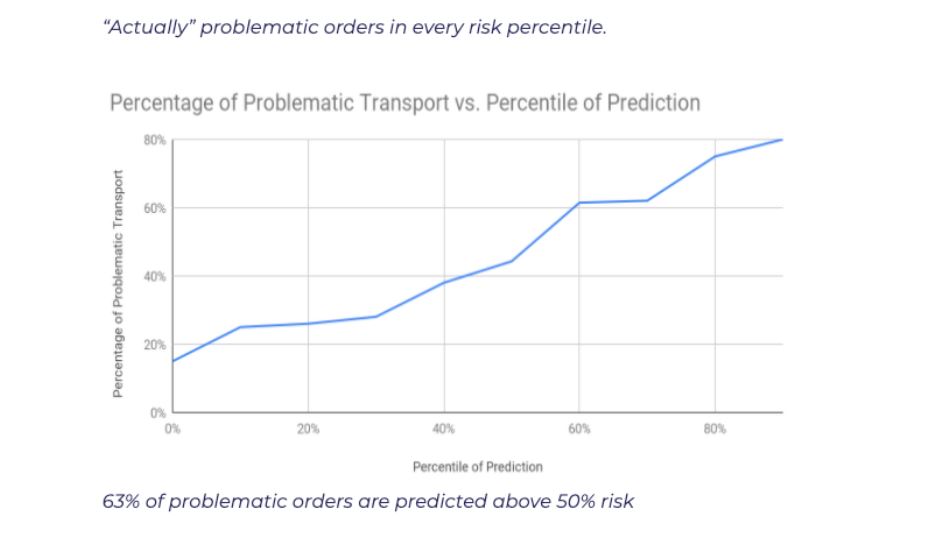
Going forward, we would be improving this machine learning model to make it even more smart and precise, and achieve an even greater reduction in transportation problems.
Ready to join a new generation of transport planners? Create your free account — no credit card required.
Start shipping
✓ 20.000+ Active Users ✓ Save 30% in Costs ✓ 100% Online
Share this post with your network!
Join 20.000+ Active Users






1 out of 2 trucks drive around empty or partially empty. A huge waste of resources.
Ship with Quicargo. Save costs, time, and CO2 emissions.
Explore the platform for free
Learn more about our shipping services
Helpful Shipping Articles
Latest posts
Get news directly in your inbox
You have already subscribed.
Join 12.000+ subscribers.
We're commited to your privacy. You may unsubscribe at any time.